This site is supported by our readers. We may earn a commission, at no cost to you, if you purchase through links.
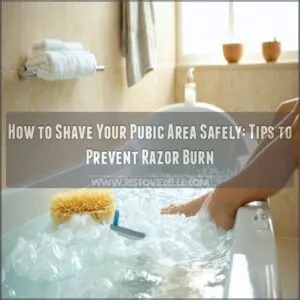 Shaving your pubic area doesn’t have to feel like navigating a maze blindfolded.
Shaving your pubic area doesn’t have to feel like navigating a maze blindfolded.
Start by trimming longer hair to about 1/8 inch with clean, sharp tools. Soak in warm water for 5-10 minutes to soften the hair, then gently exfoliate to prevent ingrown hairs.
Using a fresh razor, make short, gentle strokes in the direction of hair growth while keeping skin taut. Apply light pressure and rinse the blade frequently.
After shaving, rinse with cool water and pat dry. Finish with a fragrance-free moisturizer to soothe your skin. There’s more to achieving silky-smooth results than just lathering up and hoping for the best.
Table Of Contents
- Key Takeaways
- Preparing for Pubic Hair Shaving
- How to Shave Your Pubic Area Safely
- Step-by-Step Shaving Technique
- Post-Shave Care and Hygiene
- Maintaining a Smooth Pubic Area
- Frequently Asked Questions (FAQs)
- How do I shave off coarse pubic hair?
- Can I Shave my pubic hair?
- Should you shave your pubic area while skin is dry?
- How do you shave a pubic area after cropping?
- Should I Shave my pubic hair two days in a row?
- How do you shave a pube before shaving?
- Is it hygienic to shave your pubic hair?
- How often should you shave your pubic hair?
- What are some ways to remove pubic hair without a razor?
- What is the best way to shave your pubic area?
- Conclusion
Key Takeaways
- Before you start shaving, trim your pubic hair to about 1/8 inch and soak in warm water for 5-10 minutes to soften the hair and prevent irritation.
- Always use a sharp, clean razor and make short strokes in the direction of hair growth while keeping your skin taut to avoid cuts and ingrown hairs.
- Apply an unscented shaving cream designed for sensitive skin, and don’t rush – taking your time with proper technique will give you better results with less irritation.
- After shaving, rinse with cool water, pat the area dry gently, and apply a fragrance-free moisturizer to soothe your skin and prevent razor burn.
Preparing for Pubic Hair Shaving
Getting ready to shave your pubic area is just as important as the shaving itself.
By trimming long hair and softening it with warm water, you’ll set yourself up for a smoother and safer experience.
Trimming Long Hair Before Shaving
Before shaving your pubic area, trimming long hair reduces razor clogging and guarantees a smoother shave.
Use reliable shaving prep tools like electric clippers or scissors to keep hair manageable.
Follow these tips to ensure a safe and effective shaving experience:
- Clip hair to about 0.125 inches.
- Disinfect tools with alcohol for hygiene.
- Trim dry, never wet hair for better control.
- Avoid tugging on pubic hair growth.
- Maintain electric clipper blades regularly.
Cleansing and Exfoliating The Skin
After trimming, focus on cleaning and exfoliating to protect your skin.
Use a gentle cleanser to maintain skin pH balance, then try exfoliating scrubs for smoother results. Removing dead skin helps prevent ingrown hairs and irritation.
Sugar waxing benefits include exfoliation, but here, a light scrub works. For alternatives to shaving, consider exploring techniques on how to shave booty hair.
Finish with a skin toner—your skin will thank you!
Softening Hair With Warm Water
Soaking in warm water before shaving down there makes a huge difference. It relaxes hair follicles, making pubic hair removal smoother and easier.
Warm water benefits include softer hair and less tugging—your razor will thank you.
Here’s how:
- Take a warm bath or shower for 5-10 minutes.
- Avoid overly hot water—it irritates skin.
- Pat skin dry gently afterward.
- Use gentle exfoliation techniques if needed.
- Stick to lukewarm water for soothing skin treatments.
Applying Pre-Shave Oil or Cream
Why skip pre-shave skin prep? A quality shave oil or cream creates a slick barrier, reducing nicks and razor burn during pubic hair removal.
Massage it in gently for added moisture and protection.
| Oil vs Lotion | Shave Oil Benefits | Cream Application Tips |
|---|---|---|
| Extra hydration | Minimizes cuts | Apply evenly |
| Longer-lasting slickness | Soothes skin | Use sparingly |
| Great for tough areas | Reduces irritation | Avoid scented products |
| Light texture | Prevents razor clogging | Spread with hands easily |
How to Shave Your Pubic Area Safely
Shaving your pubic area safely is all about using the right tools and techniques to avoid irritation and cuts.
With a clean razor, proper shaving cream, and a little patience, you can achieve smooth, healthy skin.
Without unnecessary discomfort, this approach will help maintain healthy skin.
Choosing The Right Razor for Sensitive Skin
Choosing the right razor for sensitive skin is key to avoiding razor burn.
Look for one with advanced Blade Edge Technology and ergonomic features like a flexible head and sturdy Handle Grip Design. Assess your Skin Type to verify the razor matches your needs.
Prioritize razor safety by choosing clean, sharp blades to comfortably tackle shaving your pubic area.
It’s also vital to evaluate razors specifically designed for shaving bikini area.
Shaving Creams and Gels for Sensitive Skin
Got the razor? Don’t forget the right shaving cream or gel—it makes all the difference for sensitive skin types.
Look for fragrance-free options with hypoallergenic ingredients like aloe or oatmeal to avoid irritation.
For a more in-depth look, check out this guide on the best shaving creams.
Try these:
- Aveeno Therapeutic Shave Gel: Hydrating with soothing oatmeal.
- Vanicream Shave Cream: Perfect for sensitive skin.
- Eos Shea Better Shave Cream: Natural shaving alternatives with shea butter.
Trimming Tools for Pubic Hair
Before shaving your pubic area, trimming is key to avoid clogged razors.
Electric trimmers with adjustable hair length settings or sharp pubic hair scissors work best. Look for clippers with precise blade types for a smooth cut.
Use steady trimming techniques to prevent nicks. An electric trimmer’s features, like waterproofing, can simplify the process and keep things hygienic.
Essential Tools for Safe Shaving
To make safe pubic shaving easier and smoother, stock up on the right tools. Use a shaving mirror for tricky spots and safe shaving kits for hygienic results.
Keep your razor sharp (replace blades often) to avoid irritation.
Explore shaving cream alternatives like aloe-based gels for sensitive skin. Use exfoliating gloves beforehand for a clean, smooth shave.
For particularly sensitive areas like the bum cheeks, consider following a guide on how to shave your butthole for best results.
Step-by-Step Shaving Technique
Shaving your pubic area doesn’t have to be complicated if you stick to a few simple steps.
From applying shaving cream to tackling tricky spots, this guide will help you stay smooth while avoiding irritation.
Applying Shaving Cream for a Smooth Shave
Start by picking a shaving cream made for sensitive skin—unscented is your best bet.
Massage it gently onto damp skin, ensuring full coverage for a smooth glide. Think of it as a mini spa moment.
A thick, even layer will protect your skin and help prevent ingrown hairs. You can find suitable sensitive shaving cream options to use for this step.
It’s one of the best pubic shaving tips.
Proper Razor Technique for Pubic Hair
Mastering proper razor technique is all about control and care.
Use short, gentle strokes with the right angle to avoid cuts. Keep the skin taut, reducing risks while shaving pubic hair. Apply light, even pressure for smooth results.
Follow these tips:
- Control razor angle carefully.
- Avoid shaving against the grain.
- Distribute pressure evenly.
- Maintain skin tension.
- Vary stroke direction slightly.
Shaving Direction to Prevent Ingrown Hairs
To prevent ingrown hairs while shaving your pubic area safely, always shave in the direction of hair growth. This safe shaving practice minimizes razor burn and irritation.
Skip shaving angles against the grain, as it increases the risk of bumps.
Pair this with exfoliating techniques before shaving and regular razor blade maintenance to keep things smooth and irritation-free.
Navigating Tricky Areas With Gentle Techniques
When tackling sensitive spots, like tricky folds or tight curves, don’t rush.
Stretch the skin slightly to flatten it, making shaving the pubic area easier. Use gentle angle shaving with short, steady strokes, and keep the blade clean.
Soft skin preparation helps prevent irritation, while proper skin contouring tips and safe edge handling reduce nicks in these tricky zones.
Practicing good shaving hygiene techniques is essential for preventing infections and ingrown hairs in sensitive areas.
Post-Shave Care and Hygiene
You’re about to learn the tricks that’ll keep your freshly shaved areas comfortable and bump-free.
After putting in the work to get that smooth shave, you’ll want to follow these essential aftercare steps to prevent irritation and keep your skin happy.
Rinsing With Cool Water to Reduce Irritation
After shaving, splash cool water over your pubic area to calm any irritation and restore your skin’s pH balance.
Keep the water pressure gentle – think of it as giving your sensitive skin a soothing drink rather than a pressure wash.
A 30-second rinse helps close your pores and reduces redness.
If you’re feeling extra sensitive, add a few ice cubes to your rinse water.
Patting Dry Gently to Prevent Ingrown Hairs
Using a clean, soft towel, pat your pubic area dry with gentle, dabbing motions rather than rubbing. This gentle drying technique prevents skin irritation and reduces your chances of developing ingrown hairs.
Think of your freshly shaved skin like a delicate flower – it needs a soft touch to thrive. Quick, rough movements can disrupt your skin’s pH balance and trap hair follicles under the surface.
Understanding the importance of post-shave care is vital for maintaining healthy and comfortable skin.
Applying Soothing Moisturizer for Sensitive Skin
Right after your skin has dried, it’s time to pamper your sensitive skin with a gentle, pH-balanced moisturizer.
Choose fragrance-free products designed specifically for intimate areas to maintain your skin’s natural balance.
- Natural oils like jojoba or coconut work wonders for soothing freshly shaved skin.
- Eucerin Advanced Repair Lotion helps restore your skin’s moisture barrier.
- Look for ingredients like aloe vera and chamomile in your aftershave balm.
- Apply moisturizer in gentle, circular motions to avoid irritation.
- Skip products containing alcohol or artificial fragrances that can disrupt skin pH balance.
Preventing and Treating Common Shaving Issues
Shaving’s aftermath can bring unwanted souvenirs like razor burn and ingrown hairs.
Treat razor burn with cold compresses or aloe vera, while bumps respond well to over-the-counter hydrocortisone cream.
For ingrown hair solutions, warm compresses and tea tree oil work wonders.
If you notice signs of post-shave infections or persistent skin inflammation, don’t hesitate to consult a doctor for proper treatment.
Maintaining a Smooth Pubic Area
You’ll need to maintain your freshly shaved skin with regular exfoliation and moisturizing to keep that smooth, comfortable feeling lasting longer.
Following a consistent care routine between shaves will prevent common issues like ingrown hairs and razor burn while keeping your skin healthy and irritation-free.
Frequency of Shaving for Optimal Smoothness
Finding your ideal shaving schedule depends on your hair regrowth patterns and skin type. While some people maintain smoothness with daily shaving, others need longer breaks to prevent irritation.
Here’s what affects your shaving frequency:
- Fast-growing pubic hair typically needs attention every 1-2 days
- Sensitive skin requires longer breaks between sessions, usually 3-4 days
- Coarse hair texture might need more prep time but can go longer between shaves
Regular Exfoliation Routine for Healthy Skin
Now that you’ve got your shaving routine down, let’s focus on keeping your skin happy between sessions.
Gentle exfoliation twice weekly helps prevent those pesky ingrown hairs. Mix a natural scrub with sugar and coconut oil, or try chemical exfoliants with glycolic acid for better cell turnover rates.
Just remember to be gentle – your skin’s sensitive down there. Skip harsh scrubs and stick to skin soothing products specifically made for intimate areas.
Moisturizing Between Shaves
After exfoliating, keeping your skin hydrated between shaves helps maintain its pH balance and prevents irritation.
Apply natural oils or aftershave lotions daily to lock in moisture, especially in high humidity environments.
Choose fragrance-free moisturizing products designed for sensitive areas – they’ll keep hydration levels steady and minimize post-shave discomfort.
A good rule: if your skin feels tight or itchy, it’s time for some skin soothing products.
Alternative Hair Removal Methods for Pubic Area
Beyond basic moisturizing, you’ve got several options for keeping things smooth down there.
Waxing offers longer-lasting results (2-6 weeks), while depilatory creams provide a painless but short-term fix.
For permanent solutions, consider laser hair removal, which works best on dark hair, or electrolysis treatments for targeted removal.
Just remember to patch test any new method and consider seeking professional help for sensitive areas.
Frequently Asked Questions (FAQs)
How do I shave off coarse pubic hair?
Ready to tame that wild jungle?
First, trim hair with clippers on the lowest setting.
Soak in warm water, apply shaving cream, then use a sharp razor to shave with the grain.
Can I Shave my pubic hair?
Yes, you can safely shave your pubic hair.
It’s best to trim first with scissors or clippers, then use a sharp, clean razor with shaving cream.
Always shave in the direction of hair growth.
Should you shave your pubic area while skin is dry?
Like dragging sandpaper across silk, dry shaving’s a recipe for disaster.
You’ll want your skin warm and damp – soak in warm water for 5-10 minutes first to soften both skin and hair.
How do you shave a pubic area after cropping?
Soak in warm water for 5-10 minutes.
Apply shaving cream.
Use a sharp razor, and shave in the direction of hair growth.
Rinse blade frequently and apply gentle pressure to prevent cuts.
Should I Shave my pubic hair two days in a row?
It’s not recommended to shave two days in a row.
Your skin needs time to heal and recover between sessions.
Wait at least 3-4 days to prevent irritation, razor burn, and potential infections.
How do you shave a pube before shaving?
Recent studies show proper pre-shaving prep reduces injury risk by 60%.
First, trim your hair to about 1/4 inch using clean scissors or electric clippers. Then soak in warm water for 5-10 minutes.
Is it hygienic to shave your pubic hair?
Shaving pubic hair doesn’t make you more hygienic, except for managing body lice.
While personal grooming is a choice, you’ll need to follow proper safety steps to avoid infections or irritation.
How often should you shave your pubic hair?
Like a lawn that needs regular care, your regrowth pattern determines timing.
You’ll want to shave every 3-5 days if you prefer smoothness, but it’s perfectly fine to wait longer between sessions.
What are some ways to remove pubic hair without a razor?
You’ve got options.
Try hair removal creams specifically made for sensitive areas, professional waxing services, or laser treatments for longer-lasting results.
Sugaring and threading are gentler alternatives that work well too.
What is the best way to shave your pubic area?
Start with a warm shower to soften hair, then trim with clippers.
Apply shaving cream, use a sharp razor, and shave in hair growth’s direction.
Rinse frequently and finish with alcohol-free moisturizer for best results.
Conclusion
Like mastering any skill, learning how to shave your pubic area safely takes practice and patience.
By following proper preparation, technique, and aftercare steps, you’ll achieve smoother results while minimizing irritation.
Remember to replace razors regularly, never rush the process, and listen to your body’s signals.
If you experience persistent irritation, consider trying alternative hair removal methods.
With these tips in mind, you’re well-equipped to maintain your comfort and confidence in your grooming routine.

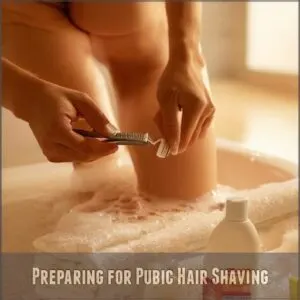

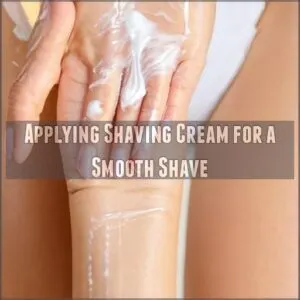
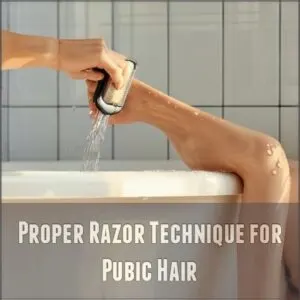
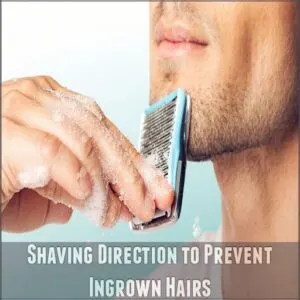



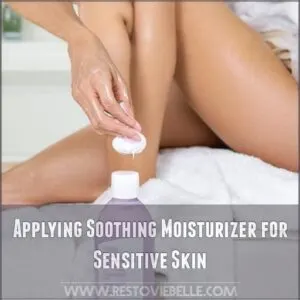
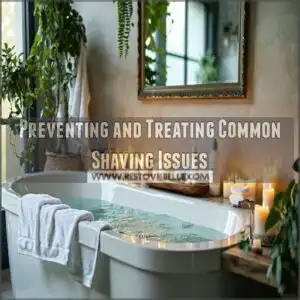


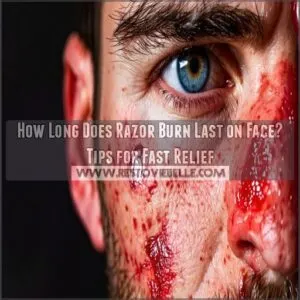
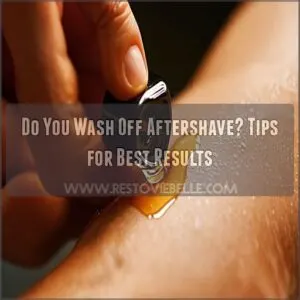



Mohamed Hassan
May 17, 2021 at 12:58 AM
Extremely informative. keep writing such kind of information. I’m really impressed by your step by step way to get the job done.